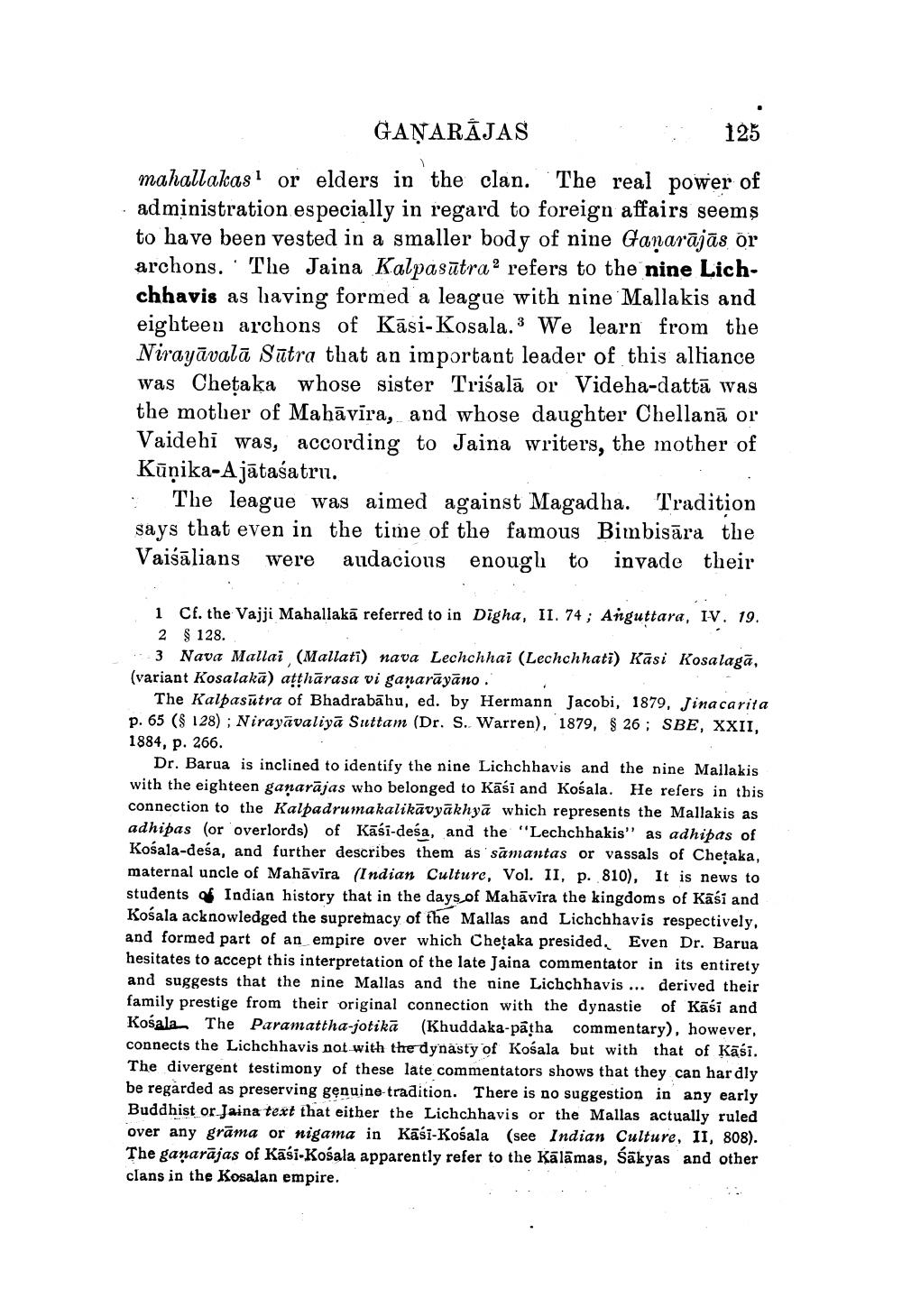________________
GANARAJAS
125
mahallakas1 or elders in the clan. The real power of administration especially in regard to foreign affairs seems to have been vested in a smaller body of nine Ganarājās or archons. The Jaina Kalpasutra refers to the nine Lichchhavis as having formed a league with nine Mallakis and eighteen archons of Kasi-Kosala. We learn from the Nirayavala Sutra that an important leader of this alliance was Cheṭaka whose sister Trisala or Videha-datta was the mother of Mahavira, and whose daughter Chellana or Vaidehi was, according to Jaina writers, the mother of Kunika-Ajataśatru.
The league was aimed against Magadha. Tradition says that even in the time of the famous Bimbisāra the Vaiśalians were audacious enough to invade their
8
1 Cf. the Vajji Mahallaka referred to in Digha, II. 74; Anguttara, IV. 19. 2 § 128.
3 Nava Mallai (Mallati) nava Lechchhai (Lechchhati) Kasi Kosalaga, (variant Kosalaka) aṭṭhārasa vi ganarayano.
The Kalpasūtra of Bhadrabahu, ed. by Hermann Jacobi, 1879, Jina carita p. 65 ($128); Nirayavaliya Suttam (Dr. S. Warren), 1879, § 26; SBE, XXII, 1884, p. 266.
Dr. Barua is inclined to identify the nine Lichchhavis and the nine Mallakis with the eighteen ganarajas who belonged to Kasi and Kośala. He refers in this connection to the Kalpadrumakalikāvyākhya which represents the Mallakis as adhipas (or overlords) of Kaśi-deśa, and the "Lechchhakis" as adhipas of Kośala-deśa, and further describes them as samantas or vassals of Cheṭaka, maternal uncle of Mahavira (Indian Culture, Vol. II, p. 810), It is news to students of Indian history that in the days of Mahāvīra the kingdoms of Kaśi and Kośala acknowledged the supremacy of the Mallas and Lichchhavis respectively, and formed part of an empire over which Chetaka presided. Even Dr. Barua hesitates to accept this interpretation of the late Jaina commentator in its entirety and suggests that the nine Mallas and the nine Lichchhavis... derived their family prestige from their original connection with the dynastie of Kasi and Kosala The Paramattha-jotikā (Khuddaka-patha commentary), however, connects the Lichchhavis not with the dynasty of Kosala but with that of Kasi. The divergent testimony of these late commentators shows that they can hardly be regarded as preserving genuine tradition. There is no suggestion in any early Buddhist or Jaina text that either the Lichchhavis or the Mallas actually ruled over any grama or nigama in Kasi-Kosala (see Indian Culture, II, 808). The ganarajas of Kasi-Kośala apparently refer to the Kalamas, Sakyas and other clans in the Kosalan empire.




